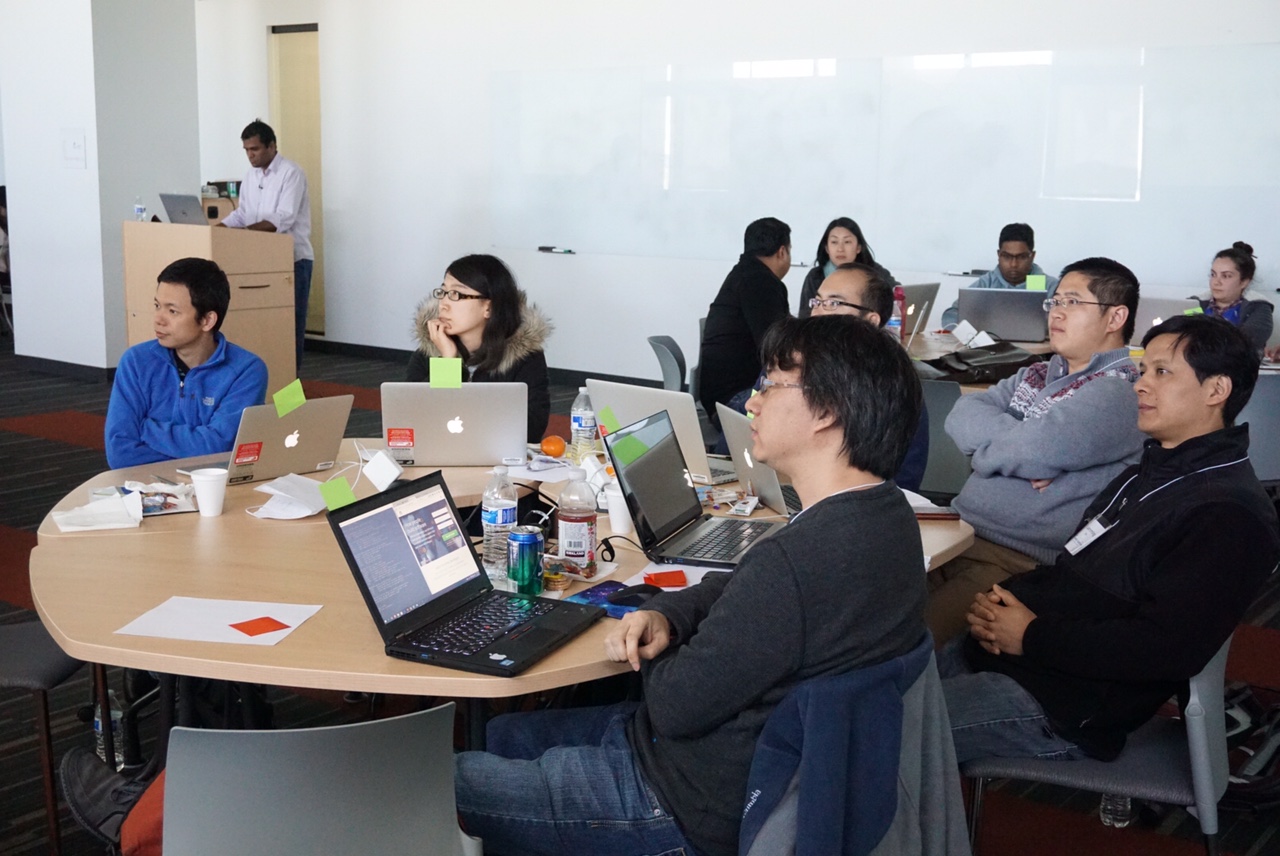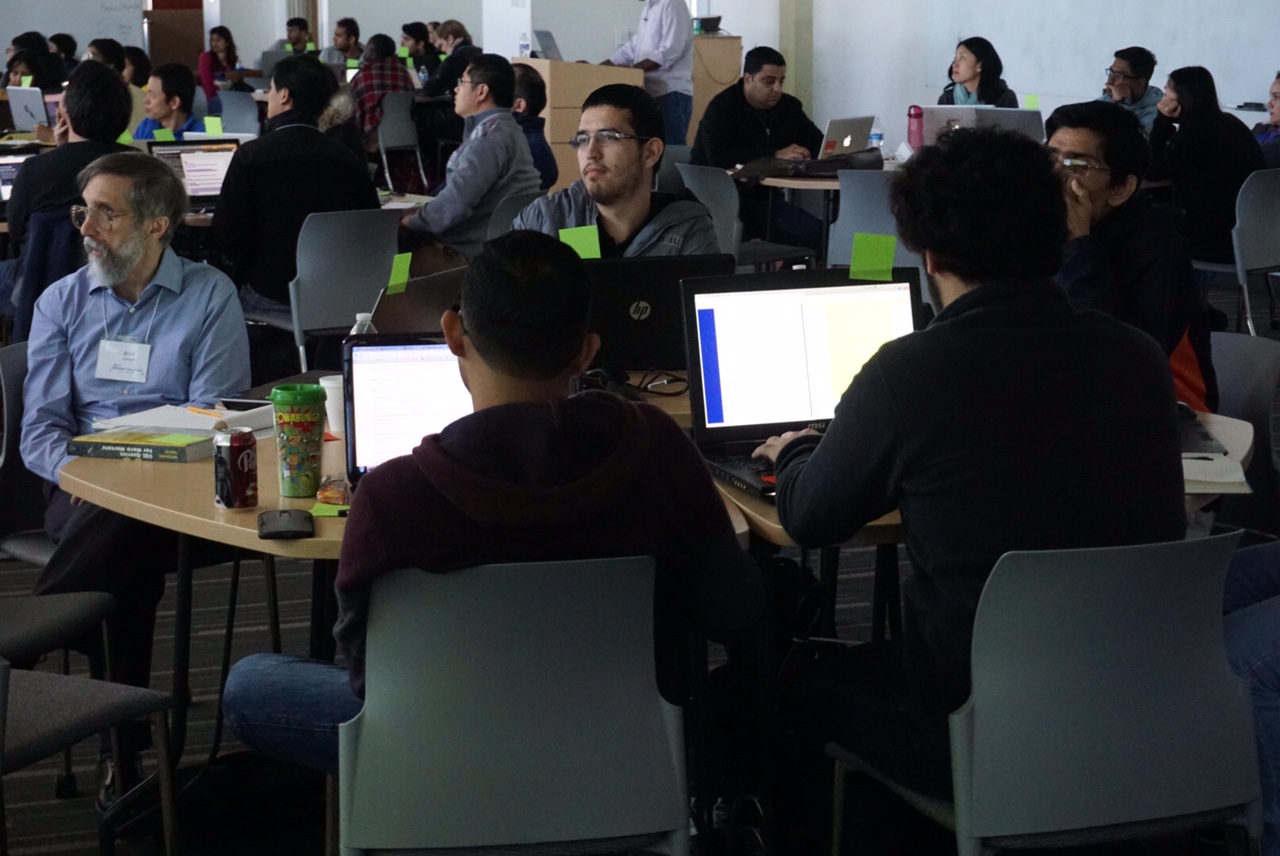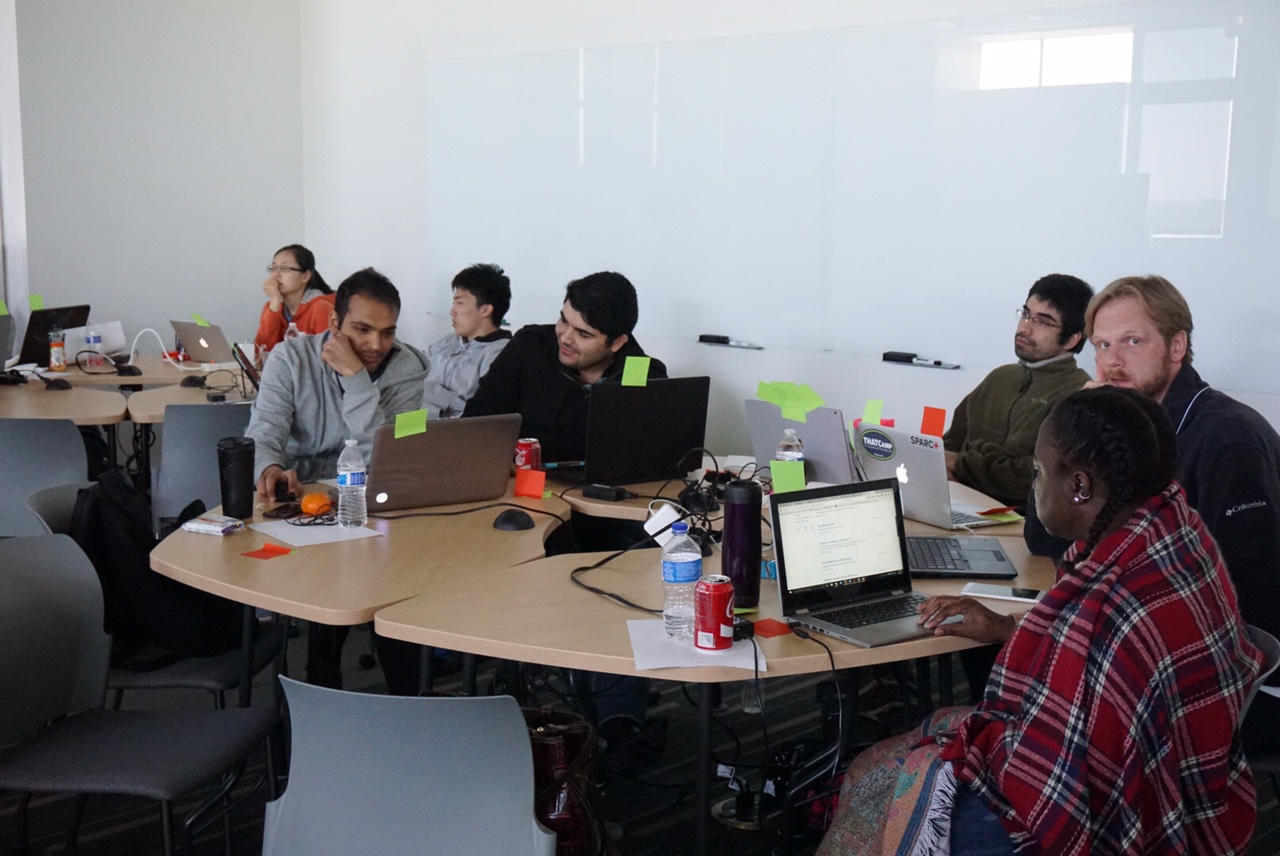University of Texas at Arlington
Apr 2-3, 2016
9:00 am - 5:00 pm
Instructors: Devendra Umbrajkar, Kevin Vilbig, Mehdi Eslamieh, Gaurav Kolekar, Daren Card, Anna Williford
Helpers: Nick Long, James Titus-McQuillan, Malini Kotak
Thank You



General Information
Software Carpentry's mission is to help scientists across all disciplines get more research done in less time and with less pain by teaching them basic lab skills for scientific computing. This hands-on workshop will cover basic concepts and tools, including program design, version control, data management, and task automation. Participants will be encouraged to help one another and to apply what they have learned to their own research problems.
Who: The course is aimed at anyone who is interested in learning new tools. You don't need to have any previous knowledge of the tools that will be presented at the workshop.
Where: UTA campus, Engineering Research Building, room 435. Get directions with OpenStreetMap or Google Maps.
Requirements: Participants must bring a laptop with a few specific software packages installed (listed below). They are also required to abide by Software Carpentry's Code of Conduct.
Contact: If you have questions about the workshop please email to awillifo@uta.edu. For help with software installation please email to dcard@uta.edu .
Schedule
Day 1
| 09:00 | Pre-workshop Survey |
| 09:15 | Unix Shell 1 Linux lesson; Data; Linux Commands |
| 10:45 | Coffee |
| 11:00 | Unix Shell 2 Data With Scripts And Outputs; Shell History |
| 12:30 | Lunch break |
| 1:30 | Programming with Python 1 Python Basics; Python commands |
| 3:00 | Coffee |
| 3:15 | Programming with Python 2 Python lesson II; Data |
| 4:45 | Wrap-up |
Day 2
| 09:00 | Databases and SQL 1 SQL lessons 1-2 ; Data |
| 10:45 | Coffee |
| 11:00 | Databases and SQL 2 |
| 12:30 | Lunch break |
| 1:30 | Version Control with Git 1 Git/GitHub Intro ; Git Lesson 1-2 |
| 3:00 | Coffee |
| 3:15 | Version Control with Git 2 |
| 4:30 | Wrap-up |
| 4:45 | Post-workshop Survey |
Lessons: Our lessons are based on lessons developed by Software Carpentry and by Data Carpentry organizations.
Etherpad: http://pad.software-carpentry.org/2016-04-02-UTA.
We will use this Etherpad for chatting, taking notes, and sharing URLs and bits of code.
Saved latest version of Etherpad (after the workshop) is here.
Setup
To participate in a Software Carpentry workshop, you will need access to the software described below. In addition, you will need an up-to-date web browser.
We maintain a list of common issues that occur during installation as a reference for instructors that may be useful on the Configuration Problems and Solutions wiki page.
The Bash Shell
Bash is a commonly-used shell that gives you the power to do simple tasks more quickly.
Windows
- Download the Git for Windows installer.
- Run the installer and follow the steps bellow:
- Click on "Next".
- Click on "Next".
- Click on "Next".
- Click on "Next".
- Click on "Next".
- Select "Use Git from the Windows Command Prompt" and click on "Next". If you forgot to do this programs that you need for the workshop will not work properly. If this happens rerun the installer and select the appropriate option.
- Click on "Next". Keep "Checkout Windows-style, commit Unix-style line endings" selected.
- Select "Use Windows' default console window" and click on "Next".
- Click on "Next".
- Click on "Finish".
This will provide you with both Git and Bash in the Git Bash program.
Mac OS X
The default shell in all versions of Mac OS X is Bash, so no
need to install anything. You access Bash from the Terminal
(found in
/Applications/Utilities). You may want to keep
Terminal in your dock for this workshop.
Linux
The default shell is usually Bash, but if your
machine is set up differently you can run it by opening a
terminal and typing bash. There is no need to
install anything.
Git
Git is a version control system that lets you track who made changes to what when and has options for easily updating a shared or public version of your code on github.com. You will need a supported web browser (current versions of Chrome, Firefox or Safari, or Internet Explorer version 9 or above).
Windows
Git should be installed on your computer as part of your Bash install (described above).
Mac OS X
For OS X 10.9 and higher, install Git for Mac
by downloading and running the most recent "mavericks" installer from
this list.
After installing Git, there will not be anything in your /Applications folder,
as Git is a command line program.
For older versions of OS X (10.5-10.8) use the
most recent available installer labelled "snow-leopard"
available here.
Linux
If Git is not already available on your machine you can try to
install it via your distro's package manager. For Debian/Ubuntu run
sudo apt-get install git and for Fedora run
sudo yum install git.
Text Editor
When you're writing code, it's nice to have a text editor that is
optimized for writing code, with features like automatic
color-coding of key words. The default text editor on Mac OS X and
Linux is usually set to Vim, which is not famous for being
intuitive. if you accidentally find yourself stuck in it, try
typing the escape key, followed by :q! (colon, lower-case 'q',
exclamation mark), then hitting Return to return to the shell.
Windows
You can use your favorite text editor. If you do not have one, we recommend
Notepad++ or
Sublime Text.
Be aware that you must
add its installation directory to your system path.
To add Notepad++ to the path:
1) Open Git-Bash from the start menu.
2) Type: cd [enter] to make sure you are in your home directory.
3) Type: notepad .bashrc [enter]. This will create .bashrc file in Notepad.
Add the following text to the file:
export PATH=$PATH:"C:\Program Files (x86)\Notepad++"
alias npp=notepad++
4) Save the file and exit Notepad.
5) Open a new Git-Bash window. You should now be able to launch Notepad++ by typing: npp [enter].
If you run into trouble please ask your instructor to help you with this.
Mac OS X
You can use your favorite text editor. If you do not have one, we recommend Text Wrangler or Sublime Text.
Linux
You can use your favorite text editor. If you do not have one, we recommend Gedit, Kate or Sublime Text.
Python
Python is a popular language for scientific computing, and great for general-purpose programming as well. Installing all of its scientific packages individually can be a bit difficult, so we recommend Anaconda, an all-in-one installer.
Regardless of how you choose to install it, please make sure you install Python version 3.x (e.g., 3.4 is fine).
We will teach Python using the IPython notebook, a programming environment that runs in a web browser. For this to work you will need a reasonably up-to-date browser. The current versions of the Chrome, Safari and Firefox browsers are all supported (some older browsers, including Internet Explorer version 9 and below, are not).
Windows
- Open http://continuum.io/downloads with your web browser.
- Download the Python 3 installer for Windows.
- Install Python 3 using all of the defaults for installation except make sure to check Make Anaconda the default Python.
Mac OS X
- Open http://continuum.io/downloads with your web browser.
- Download the Python 3 installer for OS X.
- Install Python 3 using all of the defaults for installation.
Linux
- Open http://continuum.io/downloads with your web browser.
- Download the Python 3 installer for Linux.
- Install Python 3 using all of the defaults for installation. (Installation requires using the shell. If you aren't comfortable doing the installation yourself stop here and request help at the workshop.)
- Open a terminal window.
-
Type
bash Anaconda-
and then press tab. The name of the file you just downloaded should appear. -
Press enter. You will follow the text-only prompts. When
there is a colon at the bottom of the screen press the down
arrow to move down through the text. Type
yesand press enter to approve the license. Press enter to approve the default location for the files. Typeyesand press enter to prepend Anaconda to yourPATH(this makes the Anaconda distribution the default Python).
Once you are done installing the software listed above, please go to this page, which has instructions on how to test that everything was installed correctly.
SQLite
SQL is a specialized programming language used with databases. We
use a simple database manager called
SQLite in our lessons.
For our lesson you will need Firefox and SQL manager add-on. Follow these steps to complete the set up:
1. Install Firefox
2. Install the SQLite Manager add on:
Menu (the three horizontal lines near the top right corner of Firefox) -> Add-ons -> Search -> SQLite Manager -> Install -> Restart now
3. Add SQLite Manager to the menu:
Menu -> Customize, then drag the SQLite Manager icon to one of the empty menu squares on the right, Exit Customize
4. Open SQLite Manager: Menu -> SQLite Manager
